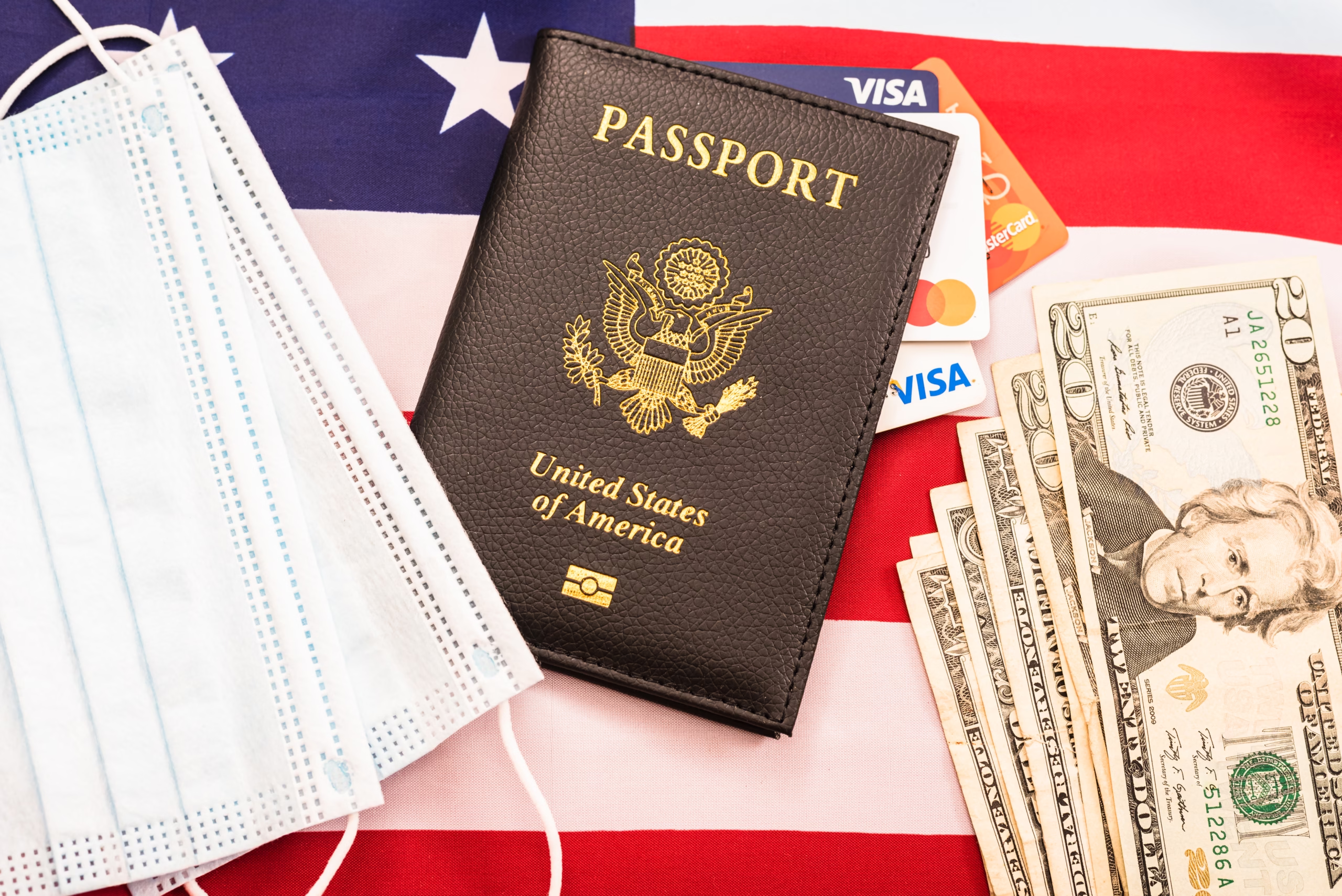
By Rishabh Bitola, Founder of Infotyke
Introduction
In September 2025, the U.S. government introduced a sweeping change to the H-1B visa program: a $100,000 fee on certain applications under a new proclamation titled “Restriction on Entry of Certain Nonimmigrant Workers.” This move is already reshaping how tech firms, workers, and global mobility operate — especially for Indian IT firms, who are major stakeholders in the H-1B ecosystem. This article unpacks what exactly changed, the short- and medium-term impact, and what companies and individuals should do (and avoid) to navigate this new environment.
What Exactly Changed
Here are the key points of the new regulation/fee (as of September 2025):
- A $100,000 fee must be paid by a sponsoring employer when filing new H-1B visa petitions (for workers outside the U.S.) as of September 21, 2025.
- This fee is not annual in the sense of being imposed every year; it’s a one-time fee associated with the petition.
- Existing H-1B visa holders (and those whose petitions were filed before the fee effective date) are exempt from this fee. Renewals are also exempt.
- The fee is scheduled for one year initially, but could be extended or made permanent depending on U.S. policy decisions.
Why This Change Was Introduced
Understanding the motivation helps anticipate future trends:
- A political push to reduce reliance on foreign high-skilled labor, especially in tech, and to prioritize American workers.
- Concerns about outsourcing and how H-1B is used by large Indian IT (and other global) firms to deploy talent in the U.S. at relatively lower cost.
- Attempt to minimize “abuse” (as framed by some US authorities) of the visa system and increase the cost barrier for new (especially lower-skill or lower paid) entrants.
Impact: USA, Indian IT Firms & Global Labour Flows
Impact on the USA
- Higher costs for employers – Companies hiring new H-1B talent for roles outside the U.S. will now face a substantial upfront cost. That will pressure margins or force trade-offs: who gets hired, where, and how.
- Shift in hiring strategies – Expect more firms to favor hiring remotely, offshoring, or using contractors rather than bringing people into the U.S. via H-1B for roles that can be done remotely.
- Potential gaps in talent – Some specialized roles that require close collaboration or onsite presence might suffer if candidates are unwilling or unable to absorb or pass on the extra cost.
- Legal and compliance uncertainty – Rapid changes like this always bring questions: how the rule will be enforced, how “current vs new” is determined in practice, litigation risks, and how related visa categories (H-4, etc.) may be affected.
Impact on Indian IT Firms
-
Cost pressure and margin compression – Indian IT firms that regularly sponsor H-1B employees for onsite U.S. work will now face much higher costs. Either they bear it, pass it to clients, or reduce the number of such placements.
-
Acceleration of offshoring / nearshoring models – Firms are likely to double down on offshore delivery, nearshore centres, and remote work models, to avoid the cost and disruption of U.S. placements.
-
Restructuring or rethinking employee flows – Projects that depended on onsite presence might move earlier to offshore, or Indian firms may push for more local hiring in the U.S. to reduce dependence on H-1B visas.
-
Talent morale, retention & risk – Indian professionals considering U.S. work may become wary. Existing visa holders are exempt, but the uncertainty and potential travel issues create stress. Firms may face attrition or difficulty in recruiting global talent.
Global Effects
-
Alternative destinations become more attractive – Countries like Canada, Australia, parts of Europe, UK, etc., may see increased interest from tech professionals who now view the U.S. as more restrictive.
-
Increased remote talent utilization – Global companies will more aggressively invest in remote work infrastructure, invest in cross-border delivery models, and further decentralize teams.
-
Potential legal or diplomatic friction – Countries whose workers are highly dependent on U.S. visas (India prominently) may respond with trade/diplomatic pressure or negotiate exemptions.
What You (Company / Professional) Should Do
Given these changes, here are concrete strategies to adapt, survive, and potentially thrive.
For Companies (Especially Indian IT / Global Firms)
-
Audit your usage of H-1B visas
Map out which roles absolutely need U.S. onsite presence vs. which can be remote/offshore. Prioritize cost-benefit of sponsorship under new fee rules.
-
Reevaluate compensation / pricing models
If you will absorb some of the fee, do you factor it into pricing for U.S.-based projects? Can clients bear increased costs? If not, reduce reliance on onsite staffing.
-
Strengthen offshore / nearshore delivery
Accelerate hiring, training, and capacity building in India (or in regional hubs) so you can deliver high quality work without moving staff physically.
-
Explore visa alternatives
Investigate other visa categories (L-1, OPT, TN if applicable), or consider talent mobility through other countries. But each has its own constraints and scrutiny.
-
Legal / compliance preparation
Ensure documentation is in order. Understand exactly who is “new vs current” under the rule. Stay updated with USCIS and Department of Labor guidelines. Possibly consult immigration attorneys to manage risk.
-
Employee communication
Be transparent with current and prospective employees about the changes. Anxiety among employees can lead to costly turnover otherwise.
-
Diversify geographies
If you serve U.S. clients heavily, explore expanding presence elsewhere, including Latin America, Europe, Asia, where costs and visa barriers may be less volatile.
For Individuals (Professionals, Aspirants)
-
Plan carefully before applying
If you’re outside the U.S. and planning to apply for an H-1B via a sponsor, know that the $100,000 fee will likely be borne by the employer, but they may be less willing to sponsor. Confirm this before proceeding.
-
Consider alternate pathways
Explore other visa routes, remote jobs, or moving to other countries with more accessible high-skilled work visa programs.
-
Maintain flexibility
Be open to remote or hybrid roles. Also, for existing H-1B holders, keep travel, renewals, visa status up to date; avoid unnecessary risks given changing rules.
-
Build skills and value
When visa costs and barriers rise, companies will focus more on high value, specialized skills. Deep expertise, ability to drive business outcomes, leadership — these matter more.
-
Stay informed
Immigration law can shift quickly. Keep up with news, policy proclamations, and engage with professionals or networks who can help (immigration lawyers, industry forums).
What to Avoid
-
Don’t assume cost-sharing with employer without clarity
Some may expect the employer to absorb the fee. Make sure this is documented. Don’t accept ambiguous promises.
-
Don’t leave things to last minute
Because of the law’s effective date and phased implementation, waiting too long might risk missed windows, higher costs, or inability to apply.
-
Avoid overcommitment to U.S. onsite strategies
If your business or career plan is heavily dependent on being physically in the U.S., this fee raises the risk significantly.
-
Don’t ignore legal risks & compliance
Because proclamations can be challenged, clarified, or reinterpreted. Firms and individuals must ensure their documentation, petitions, status, travel, etc., fully comply to avoid denials or penalties.
Upside / Opportunities
Yes, there are challenges — but crises often bring opportunity. Here are potential positives:
-
Boost for India and other talent-rich countries
As fewer people move physically, more work will stay in places like India. That means job growth, capability building, infrastructure investment.
-
Improved standards & specialization
Firms will invest in higher value work offshore. Professionals will sharpen skills that are harder to outsource or automate.
-
More remote and distributed work culture
Companies will get better at managing globally distributed teams. Remote work tools, processes, culture will be refined.
-
Room for policy advocacy & partnerships
Indian government, industry bodies (like Nasscom) can negotiate, seek exemptions, or work with U.S. firms to find win-win solutions.
The $100,000 H-1B fee change is a landmark shift in U.S. immigration policy. It raises the barrier for new visa sponsorship significantly. For Indian IT firms, U.S. companies, and professionals, this is a call to adapt quickly: rethink delivery models, plan financials differently, focus on skills, and explore flexibility.
Those who anticipate, adapt, and act decisively will be best positioned — not just to survive, but to lead in the post-fee world. It’s not about fear; it’s about recalculation and strategy.








